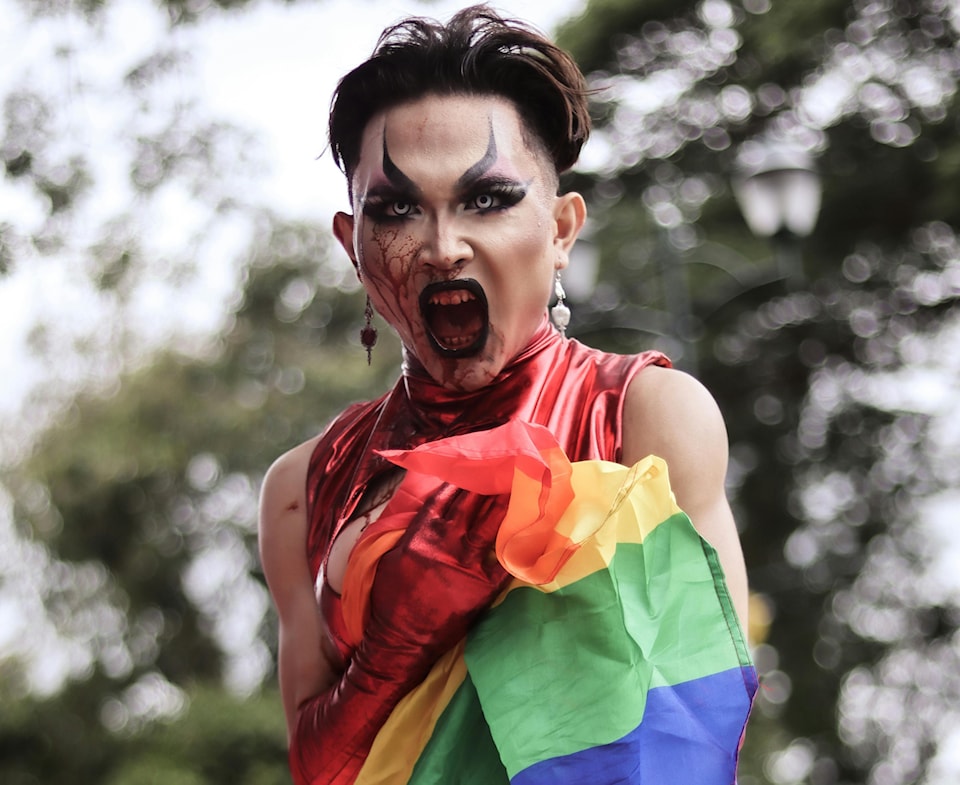Queerdom and Halloween go together like the author of this editorial and being bad at simile.
The esoteric relationship between the mid-fall festival and the LGBTQ+ community is, by definition, not widely known despite its deep roots in Toronto’s history and the important role it played in organizing queer liberation movements.
Sky Gilbert is a poet, novelist, playwright, filmmaker, theatre director, drag queen and co-founder of one of the world’s largest gay and lesbian theatres, Toronto’s Buddies in Bad Times Theatre of which he was the artistic director of between 1979 and 1997.
Gilbert received his PhD from the University of Toronto in 2006. He explored male femininity as an aesthetic innovation in Noel Coward's work.
“I'm afraid I don't know the queer history of Halloween, not sure if there is one other than it was a time for drag queens to come out from hiding back in the last century,” he said.
Gilbert said Halloween was one of the only times drag queens could come out of hiding within the last century before the modern queer rights movement, even if it was not fully safe for them.
Queer spaces historically have engaged in ball culture, often referred to as the Ballroom Scene, an African-American and Latino underground LGBTQ+ subculture which revolved around drag shows.
The culture is famously depicted in the documentary Paris is Burning and heavily inspired the show RuPaul’s Drag Race.
Ball culture flourished in a former fire hall turned iconic gay bar, the St. Charles Tavern on Yonge Street. In the 1960s and '70s, it boomed into the most popular location in Toronto for gay men.
The St. Charles quickly became infamous for its Halloween drag shows, a seasonal classic among ball culture.
Gilbert said these places were not always the safe place queer spaces are expected to be today.
“They used to do that at the St. Charles Tavern on Yonge Street,” he said. “It was customary to throw eggs at [drag queens].”
Canada’s LGBTQ+ archives have documented how the annual Halloween ball turned into an event where public queer-bashing was a regular occurrence.
Crowds would form outside the tavern and hurl ink, slurs and even poultry products at drag queens.
Gay rights activist George Hislop estimated that 90 per cent of the crowd attended to cheer on the drag queens, and the violence administered by the bigoted remainder could range from the simple act of throwing “eggs at the faggots” to violent brawls or even a 1968 attempted gasoline bombing.
Toronto Police Chief John Ackroyd stated in 1979 that there was no violence targeted towards gay people at the event.
The lack of police protection led to the implementation of Operation Jack O’Lantern by the Gay Alliance Toward Equality (GATE) which saw groups of about 10 men and women patrolling an area with a lawyer and a first-aid person.
This, along with awareness work done by the University of Toronto Homophile Association, led to a sudden lowering of violent crime against queer folk.
There were 130 arrests at the 1979 Halloween Ball, but there were only 13 arrests, none for violent crimes, in the following year.
We Mostly Come Out at Night: 15 Queer Tales of Monsters, Angels & Other Creatures is a book that was released in May 2024. Contributing author and the book’s editor Rob Costello said much within the editor’s note and introduction on the matter of queerness and ghoulishness.
“We queer and trans folks know a lot about monsters, don’t we? From the time most of us are first figuring out who we are, we’re forced to confront them wherever we look, from the classroom to the chat room and everywhere in between,” he wrote.
In the book, queer and trans authors aim to embrace the metaphor of monsters in folklore in a world that already fears and others the community.
Much contemporary horror has tackled themes of queerness and the horror within them, from movies like Jennifer’s Body or I Saw the TV Glow to books such as Carmilla or Hell Followed with Us due to the queer cultural realities that thematically translate into striking the vein of horror, pardon the vampire pun.
Whether it is a night in which queer people are permitted to freely express their queer identity or an event in which the horrors of queer reality can be reclaimed, Halloween finds itself with a distinct and observable queer nook cut out in its history and culture.



